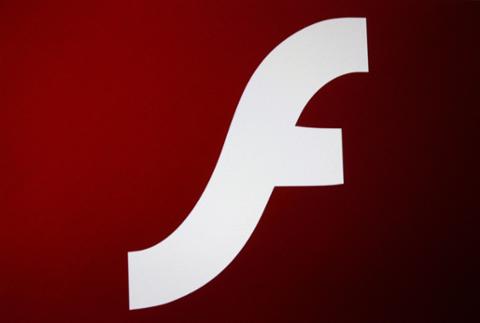
It's been an enormous couple of days for flash-based application-acceleration cards, with three new products continuing to push the limits of "hot" data close to the server. This week, LSI announced that it had teamed with NetApp to supply its own flash controller and memory in conjunction with NetApp's Flash Accel software. Storage giant EMC, meanwhile, preferred to keep technology in-house, announcing the XtremSF PCIe-based flash cards plus the XtremIO family of flash-optimized storage products. Not to be outdone, Fusion-io revealed that it had pulled nine million IOPS from a single flash drive, while Violin Memory unveiled a new PCI Express card and an enhancement of its supply partnership with Toshiba.
EMC
As the incumbent storage giant, you could expect EMC to make a splash, and it did. In 2012, EMC announced XtremSW software that could convert flash storage into server cache. This week, EMC said XtremSW could run on a variety of SLC and MLC flash cards, including the new XtremSF PCI Express flash cards, which can act as cache or as direct-attached storage. EMC claims the XtremSF cards could deliver 1.13 million IOPS in a standard half-height, half-length 25w PCIe card form factor, with 350 gigabytes, 550GB, 750GB, and 2.2 terabyte capacities. EMC also announced the EMC XtremIO all-flash, scale-out enterprise storage array (formerly known as Project X), which
chief executive Jim Tucci used to justify his argument that disk arrays are dead. This first output of the XtremIO acquisition pairs two 1U Intel-based storage nodes with a 2U flash-storage enclosure. The 4U arrays are called X-Bricks, each of which exceeds 150K functional 4K mixed read/write IOPS and 250K functional 4K read IOPS; for a cluster of 8 X-Bricks, that scales out to and over 1.2 million functional 4K mixed read/write IOPS, and 2 million functional 4K read IOPS.
LSI-NetApp
LSI and NetApp haven’t actually said how much the combination of the Flash Accel software and the Nytro WarpDrive cards will improve application performance.
LSI's data sheet for the WarpDrive cards indicates that they're available in single-level-cell (SLC) tehcnology in 200- and 400-Gbyte configurations, and using MLSC technology for 400-, 800-, and 1.6 TB configurations. 4K IOPS for SLC tech is 238,000 read/133,000 write, and 218,000 read/75,000 write for the MLC technology. Two knobs help control flash performance: the flash controller itself, and the software. LSI obviously was satisfied with its own controller technology, but turned to NetApp for software expertise.
Violin Memory
Violin announced an expansion of its supply partnership with Toshiba, as well as the third generation of its Velocity PCI Express cards, with capacities ranging from 1.37TB to 11TB of capacity (per card) and prices from $3 per GB to $6 per GB. The 1.37 TB capacity low-profile card has a 4K mix read-write performance of 120,000 IOPS; a 2.75 TB card supports 180,000 IOPS; a 5.5 TB cards handles 270,000 IOPS; and an 11 TB card handles 540,000 IOPS,
according to SearchSolidStateStorage, citing Violin numbers. Violin's move away from flash as DAS and into flash cache "is both an offensive and a defensive play as there is increasing competition from a wide variety of both large and small vendors in the flash space,” Enterprise Strategy Group analyst Mark Peters
wrote in a blog posting, “and Violin wants to address/drive as large a percentage of this nascent and dynamic market as possible… partly because it makes prima facia business sense and partly because it has a great deal of money invested (over $230M since 2009)."
Fusion-io
Perhaps fearful that it might be left out of the conversation, Fusion-io announced that it has achieved 9.608 million Input/Output Operations Per Second (IOPS) from a single 365 GB MLC Fusion ioDrive2. The breakthrough was made possible using Application Programming Interfaces (APIs) that integrate flash into host systems, allowing it to bypass normal bottlenecks in the operating system, the company said. The announcements by Violin and Fusion-io may be the most significant, if only because they show the opposing poles of the caching market: performance optimized, where price has no limit, as well as more "regular" workloads where price becomes a much stronger factor. Companies such as LSI are going to need to ensure that they can tick the boxes of an integrated hardware-software solution, especially with market gorillas such as EMC eyeing the prize.
Image: LSI
 It's been an enormous couple of days for flash-based application-acceleration cards, with three new products continuing to push the limits of "hot" data close to the server. This week, LSI announced that it had teamed with NetApp to supply its own flash controller and memory in conjunction with NetApp's Flash Accel software. Storage giant EMC, meanwhile, preferred to keep technology in-house, announcing the XtremSF PCIe-based flash cards plus the XtremIO family of flash-optimized storage products. Not to be outdone, Fusion-io revealed that it had pulled nine million IOPS from a single flash drive, while Violin Memory unveiled a new PCI Express card and an enhancement of its supply partnership with Toshiba.
It's been an enormous couple of days for flash-based application-acceleration cards, with three new products continuing to push the limits of "hot" data close to the server. This week, LSI announced that it had teamed with NetApp to supply its own flash controller and memory in conjunction with NetApp's Flash Accel software. Storage giant EMC, meanwhile, preferred to keep technology in-house, announcing the XtremSF PCIe-based flash cards plus the XtremIO family of flash-optimized storage products. Not to be outdone, Fusion-io revealed that it had pulled nine million IOPS from a single flash drive, while Violin Memory unveiled a new PCI Express card and an enhancement of its supply partnership with Toshiba.
 It's been an enormous couple of days for flash-based application-acceleration cards, with three new products continuing to push the limits of "hot" data close to the server. This week, LSI announced that it had teamed with NetApp to supply its own flash controller and memory in conjunction with NetApp's Flash Accel software. Storage giant EMC, meanwhile, preferred to keep technology in-house, announcing the XtremSF PCIe-based flash cards plus the XtremIO family of flash-optimized storage products. Not to be outdone, Fusion-io revealed that it had pulled nine million IOPS from a single flash drive, while Violin Memory unveiled a new PCI Express card and an enhancement of its supply partnership with Toshiba.
It's been an enormous couple of days for flash-based application-acceleration cards, with three new products continuing to push the limits of "hot" data close to the server. This week, LSI announced that it had teamed with NetApp to supply its own flash controller and memory in conjunction with NetApp's Flash Accel software. Storage giant EMC, meanwhile, preferred to keep technology in-house, announcing the XtremSF PCIe-based flash cards plus the XtremIO family of flash-optimized storage products. Not to be outdone, Fusion-io revealed that it had pulled nine million IOPS from a single flash drive, while Violin Memory unveiled a new PCI Express card and an enhancement of its supply partnership with Toshiba.

